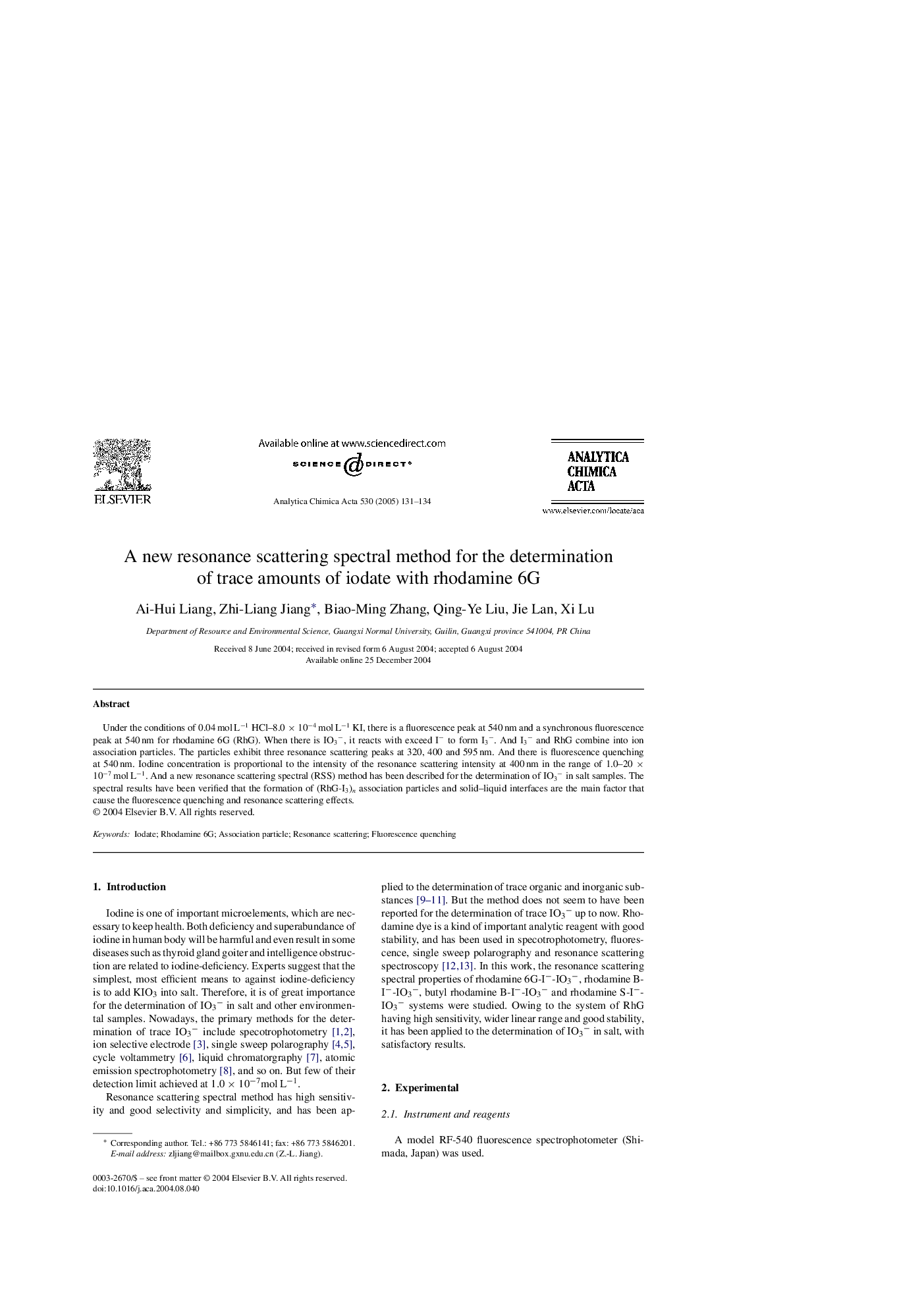| Article ID | Journal | Published Year | Pages | File Type |
|---|---|---|---|---|
| 10528761 | Analytica Chimica Acta | 2005 | 4 Pages |
Abstract
Under the conditions of 0.04 mol Lâ1 HCl-8.0 à 10â4 mol Lâ1 KI, there is a fluorescence peak at 540 nm and a synchronous fluorescence peak at 540 nm for rhodamine 6G (RhG). When there is IO3â, it reacts with exceed Iâ to form I3â. And I3â and RhG combine into ion association particles. The particles exhibit three resonance scattering peaks at 320, 400 and 595 nm. And there is fluorescence quenching at 540 nm. Iodine concentration is proportional to the intensity of the resonance scattering intensity at 400 nm in the range of 1.0-20 à 10â7 mol Lâ1. And a new resonance scattering spectral (RSS) method has been described for the determination of IO3â in salt samples. The spectral results have been verified that the formation of (RhG-I3)n association particles and solid-liquid interfaces are the main factor that cause the fluorescence quenching and resonance scattering effects.
Related Topics
Physical Sciences and Engineering
Chemistry
Analytical Chemistry
Authors
Ai-Hui Liang, Zhi-Liang Jiang, Biao-Ming Zhang, Qing-Ye Liu, Jie Lan, Xi Lu,
